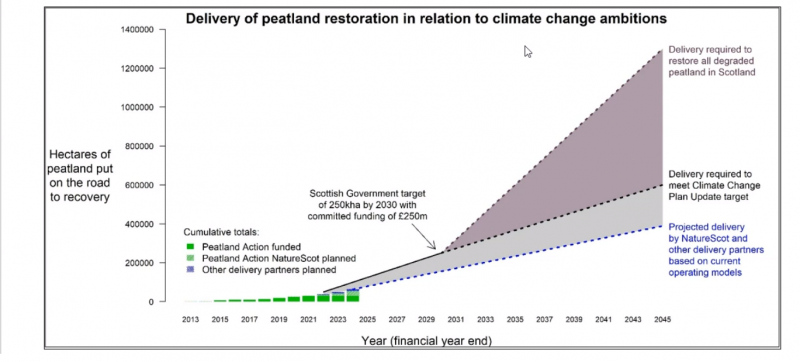
On 21st September an insightful event took place to highlight a crucial topic for preserving our environment and mitigating climate change; Nature-based solutions Webinar on Peatland Restoration, organised by Scotland House Brussels and ICLEI Europe. The webinar gathered experts together to plan for future peatland protection and peatland restoration in Europe. The topic is especially timely due to the UN Decade on Ecosystem Restoration.
Image: Session speakers in discussion
Head of the Biodiversity Unit at the European Commission, Stefan Leiner presented EU's stance: "Investing in protection and restoration of peatlands is an EU priority - new legally binding laws will be introduced". The EU Biodiversity strategy has ambitious plans to restore ecosystems with the help of green infrastructure in urban areas, which can lend to peatland protection. Despite the fact the benefits of peatland restoration far outweigh the costs, private landowners still get more income from exploitation, which is why it is crucial to change the incentive systems on a local level, including solutions such as carbon markets. Leiner also stressed that action on the local level is important to achieve the EU targets. He highlighted the work EC does with ICLEI Europe on developing guidance on how to include biodiversity in urban greening plans that can be embedded in the existing plans of local and regional authorities, as a key paradigm shift.
Director of Climate Smart Carbon Cycle Research at the Finnish Natural Resources Institute, Anne Tolvanen stated: "It is important to consider where to restore peatlands, what climate & biodiversity benefits it brings along at different locations." Finland has the highest share of peatlands globally, with 10 million hectares (ha), but half has been drained for forestry and energy production. Gladly the Natural Resources Institute is in the process of modelling to select the prime areas to be restored. They are working together with cities and municipalities to develop informative tools for decision-making.
"Peatlands are a carbon storing powerhouse. They are able to store more than double carbon than all forests of the world!" Kopansky Dianna from the UNEP Global Peatlands Initiative reminded participants. Peatlands also are a true nature-based solution, they are great carbon sink, foster species for biodiversity, act as a microclimate and improve water quality. They can really contribute to mitigating climate change with widespread restoration efforts, Kopansky highlighted.
Image: Nature Scot assessment of peatland restoration status
Francesca Osowska, CEO of Nature Scot, alerted that policymaking needs to catch up on the urgent need to restore peatlands: “30% of Scotland's land area is peatland of some form – over 2.3 million ha. This area holds 1.7 billion tons of carbon. Due to degradation around 80% of the ha are degraded, this accounts to 50% of Scotland green house gases”. This is slowly shifting with increased awareness around the topic, and Scotland being in the spotlight due to the upcoming COP26 in November 2021. They are increasingly restoring damaged habitats, with 25 000ha already restored. Osowska reminded participants that it is crucial to involve stakeholders in restoration efforts, especially landowners and regional and municipal governments.


